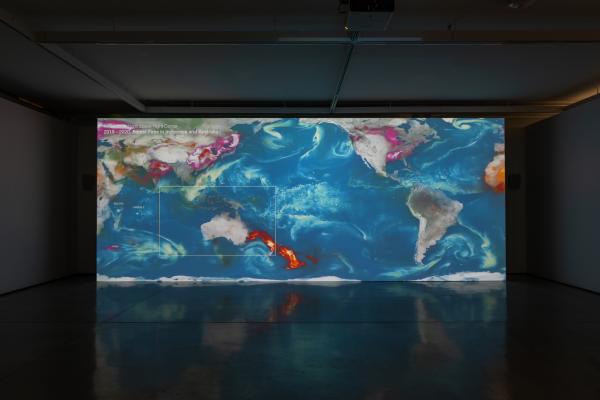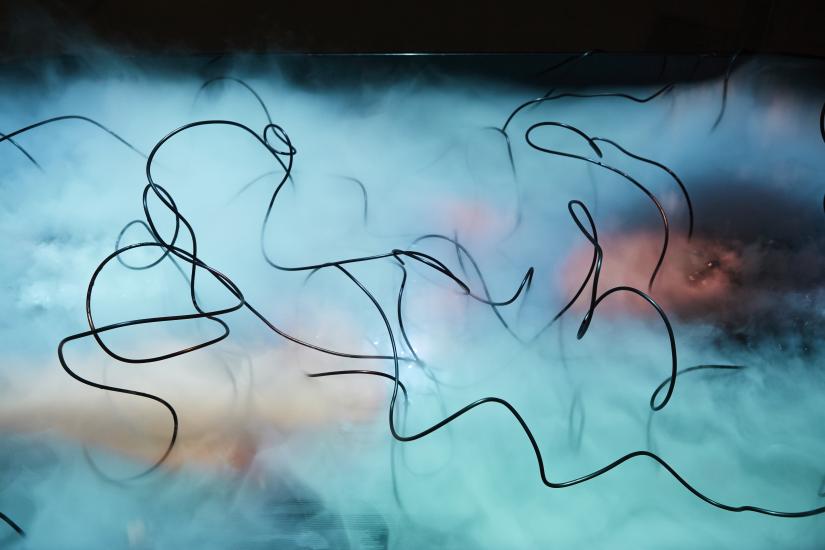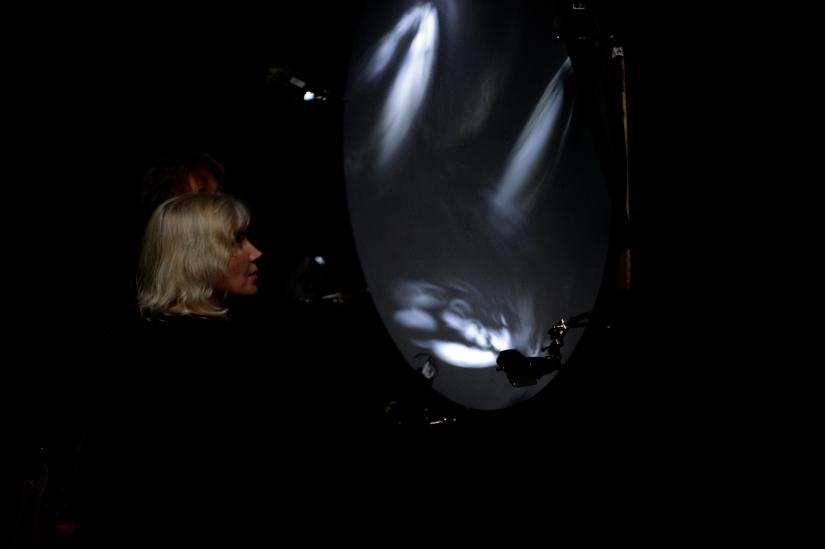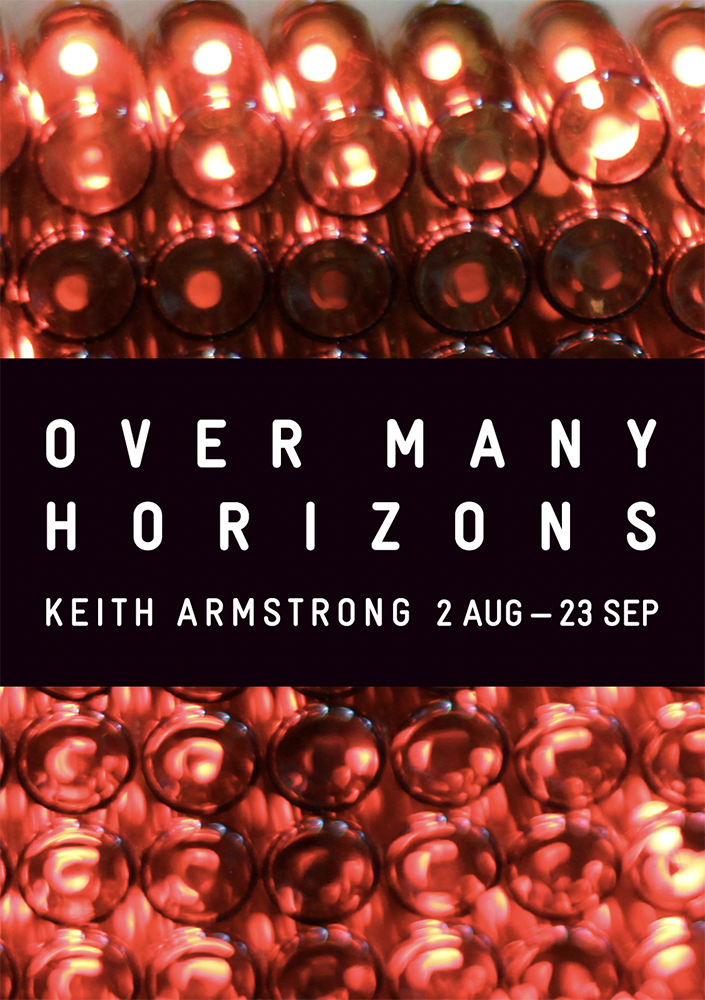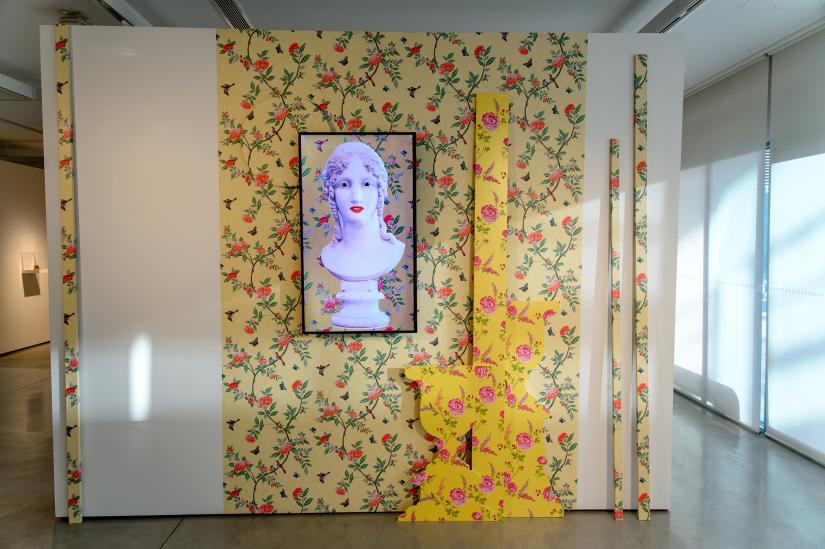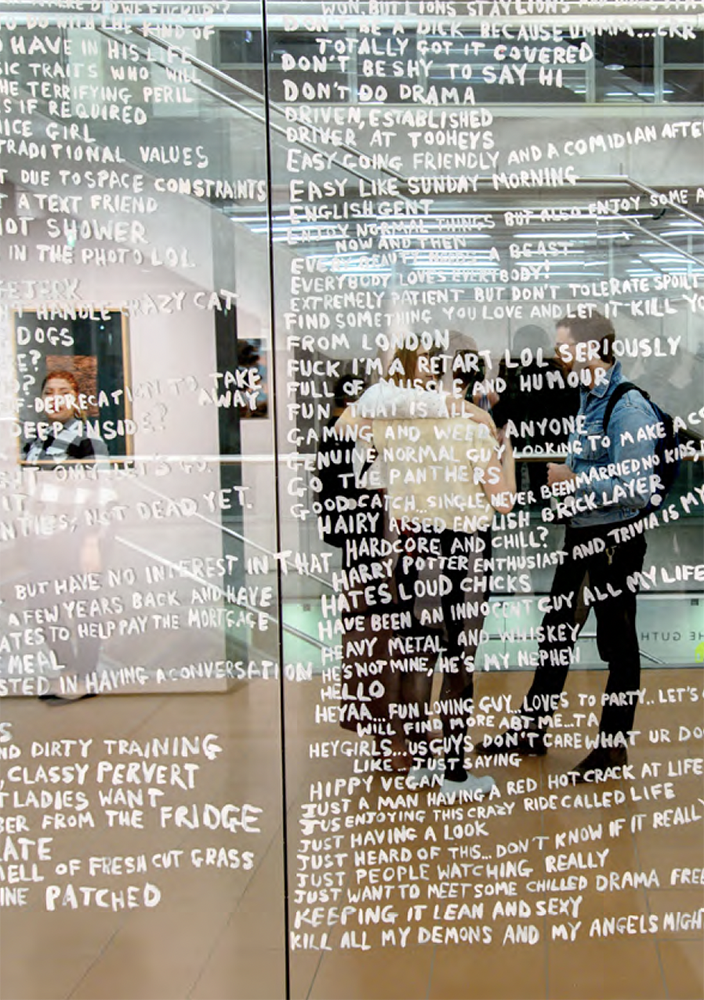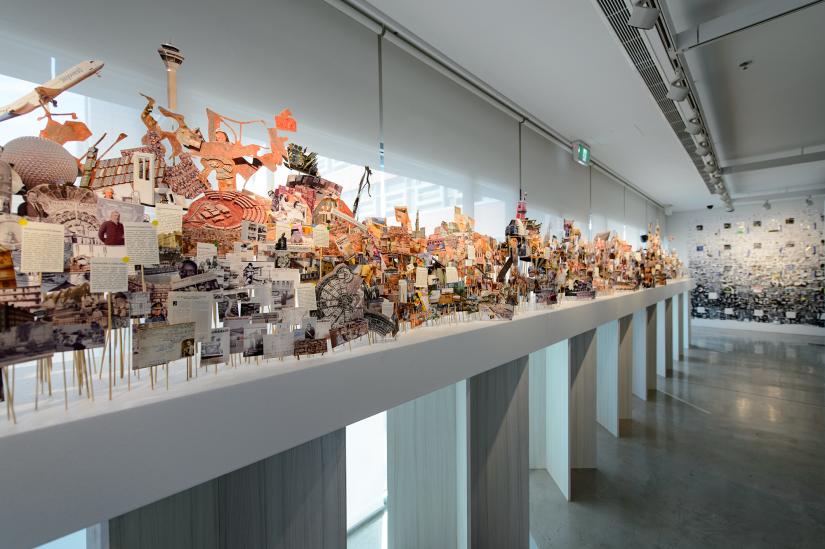The installations of Ella Barclay serve as technological tableaus, directing us to the physicality of hardware, the ethereal nature of data and the alchemic transformation of ideas.
I Had To Do It is her first solo institutional exhibition and employs a range of media to explore some of her most vital contentions – the power of text as technology, messy network architectures, myth making and the internet – as well as a reflection on 20th century techno-utopianism.
About the artist
Exhibition catalogue
Over Many Horizons is an interactive, experiential exhibition by Keith Armstrong that investigates the mesh of environmental, social and cultural ecologies that form our worlds, asking how might we re-imagine our place and actions within those networks as ‘refuturing’.
Audiences navigate the works non-linearly, encountering robotically controlled kinetic light works, telescopic tunnels of ethereal imagery and sound and gently pulsing, ambiguous surfaces. The exhibition dovetails with a range of specially curated participative events and art-science-humanities discussions that ask, why is today’s environmental crisis a crisis of ‘us’, and how must we therefore evolve?
Over Many Horizons seeks to shine a light upon the silent, shadowy barriers of cultural misunderstanding that prevent us from re-inventing ourselves as a future-sustaining species.
This Inspiring Australia initiative is supported by the Australian Government as part of National Science Week.
This project has been assisted by the Australian Government through the Australia Council, its arts funding and advisory body.
About the artist
Exhibition catalogue
The Mnemonic Mirror showcases the work of a group of Australian artists whose practices could be said in part to explore the future of the past.
For the first time in history knowing has been separated from learning, with the internet reshaping the struggle that memory continually wages against forgetfulness. Memory for many is now a resource accessed easily and randomly rather than something produced as the evidence of knowing, acquired only by the time consuming application of effort and concentration.
Curated by Kylie Banyard and Gary Carsley, The Mnemonic Mirror showcases the work of a group of Australian artists whose practices could be said in part to explore the future of the past. Each of these artists engages with making as a form of scholarship and has developed a singular practice by their individualistic approaches to the aesthetic and narrative possibilities of anachronistic or overlooked modes of visual practice. This exhibition tours to Griffith University Art Gallery in December 2016.
Exhibition publication
Architectural research has today reframed the city as a living laboratory, where people, events and things are translated into forms of visualisation.
The notion of fieldwork, once tied to anthropology, is by now a ubiquitous term for almost all research outside of the architectural studio, with emerging tropes around information collection, organization and display.
This exhibition, curated by Sarah Hearne, frames a selection of practitioners who work precisely within and against these tropes; engaging with the modes and formats of translation, from the research subject to the page, screen, or document. Their field then, is that of information, and their mode is that of new visual organization. Fieldwork will illuminate the diverse ways that contemporary architects collect and manage information to produce new formats of observation, description and evidence.
Supported by UTS School of Architecture.
